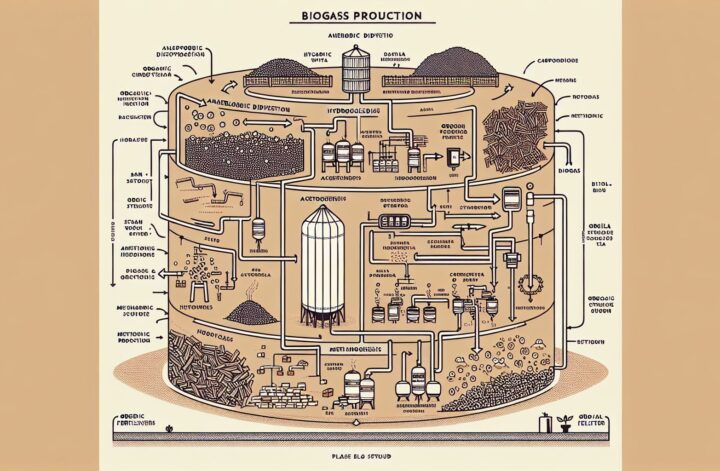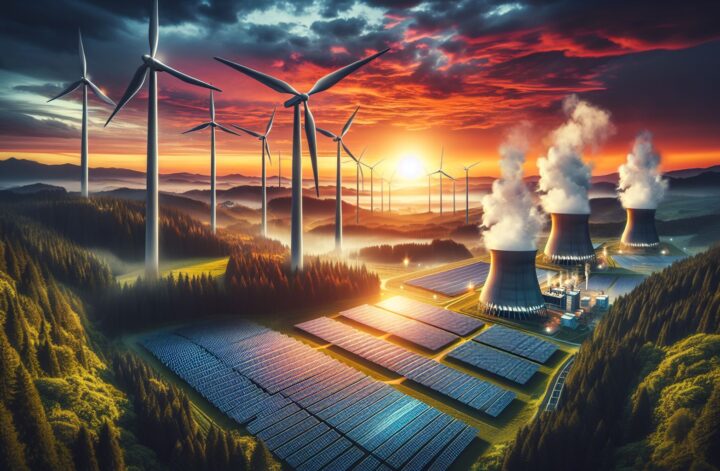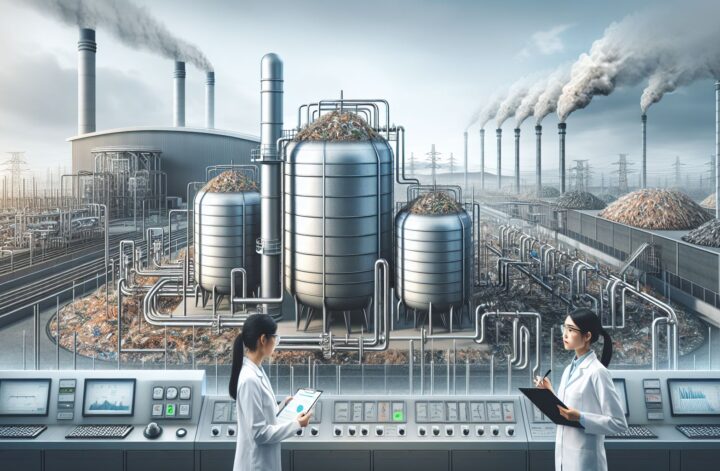As the global population increases and more industries emerge, the demand for affordable and eco-friendly energy resources also rises. One such alternative is biogas, an environmentally-friendly source of energy with tremendous potential for managing organic waste. This article dives deep into biogas production, its benefits, and the latest developments in this field.
What is Biogas?
Biogas is a type of biofuel that is naturally produced from the decomposition of organic waste. Organic waste such as food scraps, animal manure, and sewage are broken down by bacteria in an oxygen-free environment to create biogas, primarily composed of methane and carbon dioxide[^1^].
The Process of Biogas Production
The biogas production follows a four-stage process: hydrolysis, acidogenesis, acetogenesis, and methanogenesis.
-
Hydrolysis: In this first stage, complex organic matter is broken down into simpler organic matter.
-
Acidogenesis: The second stage involves transforming the simple organic matter into volatile fatty acids and alcohol.
-
Acetogenesis: In the third stage, these volatile fatty acids are further metabolized into hydrogen, carbon dioxide, and acetic acid.
-
Methanogenesis: During the last and final stage, the products from the previous process are transformed into methane, carbon dioxide, and water[^2^].
Benefits of Biogas Production
The benefits of biogas production are manifold, ranging from waste management to clean energy production and carbon sequestration.
-
Organic Waste Management: Biogas production is an excellent solution for managing organic waste. Instead of landfilling organic waste, which often causes significant environmental problems, it can be utilized for biogas production, thus reducing the amount of waste that ends up in our landfills.
-
Renewable Energy Source: Biogas can be used as a renewable source of energy. It can be used as a fuel in vehicles, for cooking and heating, and in power plants for electricity generation. By shifting more towards renewable energy sources like biogas, we can lower our reliance on fossil fuels.
-
Reduction in Greenhouse Gases: Biogas captures and utilizes methane, a potent greenhouse gas, for energy purposes. This helps to lower the emission of greenhouse gases, contributing to the mitigation of climate change.
Key Challenges and Innovations
While there are plenty of benefits with biogas production, there are also challenges that need to be addressed, primarily scaling up and increasing the efficiency of production. Researchers are studying novel designs for anaerobic digesters and exploring the co-digestion of different types of organic waste for enhanced production.
One promising area for scaling up biogas production is the application of high-rate anaerobic digestion. This process improves upon traditional biogas production by speeding up the digestion process and increasing biogas yield[^3^].
Another area of interest is the process of biogas upgrading, where technologies are used to extract and purify the methane in the biogas, improving its quality and value.
The Future of Biogas Production
With the growing demand for green and renewable energy alternatives, the future looks bright for biogas production. Coupling this with innovations in anaerobic digestion and biogas upgrading technologies, there is enormous potential for growth and development in this field.
Biogas production provides a sustainable solution to many of today’s challenges – from waste management to energy production, and climate change mitigation. As global industries continue to discover its potential benefits, biogas is poised for significant growth in the coming years.
[^1^]: Biogas – A Renewable Biofuel
[^2^]: Anaerobic Digestion (AD) Process
[^3^]: Rapid Biogas Production through High-Rate Anaerobic Digestion Methods




